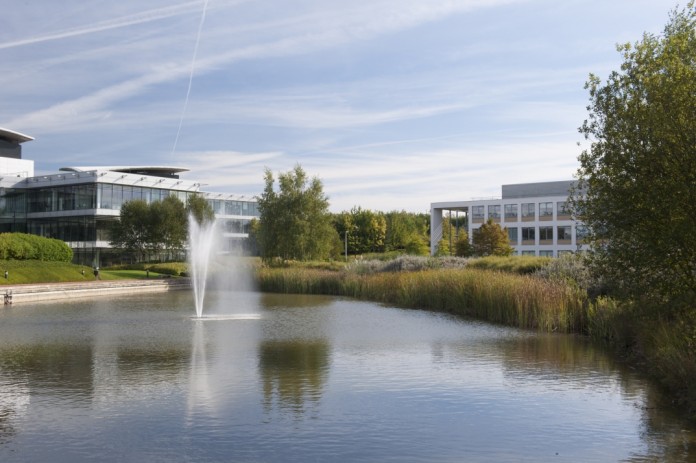The Oxford Science Park, one of the UK’s leading parks for science and technology companies, has recognised a Nobel Prize-winning biologist and a leading mathematician as it re-names two of the buildings in the Magdalen Centre, its innovation centre. Magdalen Centre South takes its new name from Professor Charles Sherrington, who is famous for his work on the nervous system. The expert in homotropy theory, mathematician Professor Henry Whitehead, has inspired the new brand for Magdalen Centre North. With the third Magdalen Centre building, the Bellhouse Building, nearing completion, the 100,000 sq ft innovation centre is one of the largest in Europe.
With the three buildings in the Magdalen Centre now celebrating a neuroscientist, mathematician and a biomedical engineer (Professor Brian Bellhouse), it reflects the broad range of activity undertaken by companies across the Park.
Professor Sir Charles Sherrington was awarded the Nobel Prize for Physiology or Medicine in 1932, based on his work on the functions of neurons in the nervous system. His 1904 work ‘The Integrative Action of the Nervous System’ has been highly influential. One of the founders of homotropy theory (mapping of topological spaces), mathematician Professor Henry Whitehead is the author of ‘Foundations of Differential Geometry’, a classic in the field. He also worked as a codebreaker at Bletchley Park during the Second World War. Professors Sherrington and Whitehead are both alumni of Magdalen College Oxford, which owns The Oxford Science Park.
New logos have been created for the Bellhouse, Sherrington and Whitehead Buildings. They have been designed to capture the essence of each’s work.
Professor Sir David Clary, President of Magdalen College, said ‘Magdalen has a tremendous record of breakthroughs in science, medicine and mathematics. Last week, one of our Fellows, Sir Peter Ratcliffe, won the Nobel Prize for Medicine, the fifth Magdalen member to do so, taking our total Nobel Prizes to ten. Many of the innovations being developed and commercialised at The Oxford Science Park are based on the fundamental research done by our members and colleagues in the Oxford University laboratories and hospitals and we are delighted to recognise and support their achievements.’
Piers Scrimshaw-Wright, CEO of The Oxford Science Park, said, ‘With advances in healthcare increasingly being driven by the convergence of various disciplines, this new branding gives us the opportunity to recognise the influence of Professors Sherrington and Whitehead, alongside that of Professor Bellhouse. As the Park continues its expansion plans with the proposed development of two new buildings on Plot 16, we expect more interdisciplinary companies to join our dynamic and flourishing ecosystem. The family of three buildings within the Magdalen Centre will play a pivotal role in future growth.’






















